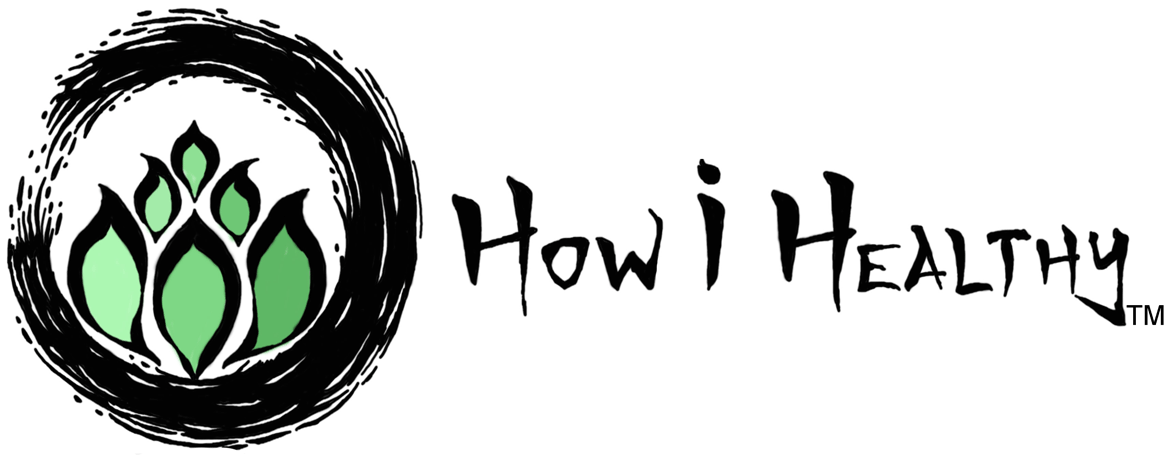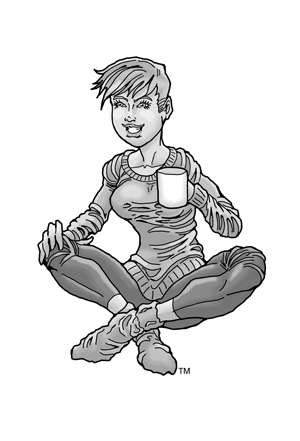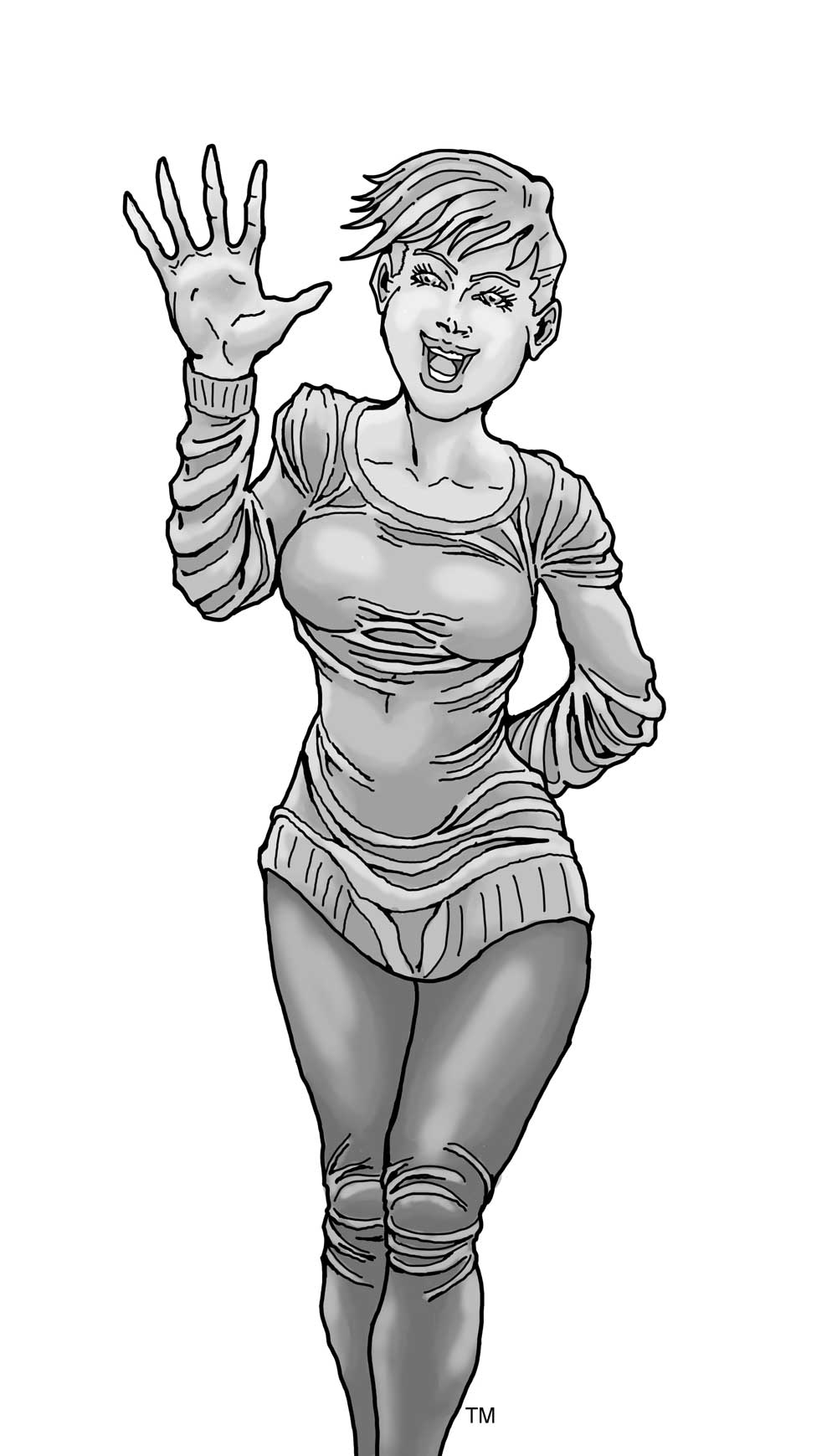In This Article, We'll Cover:
- Today’s Counterfeit Product Problems
- My Experience With Counterfeit Products
- How to Avoid Counterfeit Products
- How i Healthy’s Counterfeit Product Vetting Process
Lots of folks shop online. Chances are you do too.
And guess what? Statically, it’s likely you unknowingly bought a counterfeit product. (1, 2, 6, 7, 11, 12)
Yep. A fake. A knock-off.
And that counterfeit might come with hazards like arsenic, lead, or even poop. (1)
Yep. Poop!
But we’re in luck. There are ways to buy real deal and not some questionable quality look-alike.
I’ll show you what vetting process every product linked on How i Healthy goes through. I don’t want counterfeit products. And I don’t want to recommend or link to counterfeits. Is the process perfect? No. But I hope you’ll feel more confident in your purchases.
Counterfeits: An Unseen Problem
Guess what?
20 out of 47 products sold through third-party marketplaces were counterfeit products, according to a 2018 report by the U.S. Government Accountability Office (GAO). This report included Amazon®.com, Walmart.com, SearsMarketplace.com, Newegg.com, and Ebay.com. (1)
The report states:
- Nike Air Jordan® shoes: No counterfeits found (impressive!)
- Urban Decay® makeup: 13 out of 13 counterfeits found
- Yeti® travel mugs: 6 out of 9 counterfeits found
(1)
It doesn’t end there.
Nearly 20 percent of Instagram® content contained counterfeit products according to a 2019 report, Instagram and Counterfeiting. (12)
Because of tech advancements, like 3-D printing, counterfeiters can recreate products for cheap. Then they sell the fakes through legitimate looking online storefronts. Often for a fraction of the cost of the genuine article. (6)
Counterfeit products include apparel, accessories, toys, perfume, and even pharmaceuticals. (6)
Fakes medications? Yep.
Counterfeit Products: A Health Hazard
Counterfeit medications can lack active ingredients, have dosages or instructions mislabeled, or contain undisclosed additives. (6)
Online pharmaceutical counterfeits represented 7% of total counterfeit seizures in 2020. Reported pharmaceuticals included cough syrup, insulin, cancer medications, and cardiovascular drugs. (6)
Even non-pharmaceutical products pose health hazards.
The fake Yeti® mugs from the GAO report were contaminated with lead. (1)
The cosmetics contained cyanide, mercury, and even rat feces. (1)
Rat poop is just the beginning!
Counterfeit body products also contained: human waste, arsenic, mercury, and aluminum.
(6)
But wait! There’s More!
In 2016, UL tested 400 counterfeit iPhone® adapters for safety, fire, and shock hazards. Results? A 99% failure rate and 12 of the adapters had risk of lethal electrocution when used. (1)
And there’s still more!
An airplane safety harness system, called The Kids Fly Safe CARES (Child Aviation Restraint System) by AmSafe®, is for children to use instead of a car seat. The harness is also the only Federal Aviation Administration FAA certified airplane harness. (10, 11)
Do you see where this is going?
In 2020, The New York Times purchased the CARES device and compared it to an Amazon®-purchased “FAA Certified” restraint system. (11)
The results? Not surprising.
The Amazon®-purchased harness, although at first glance looked the same, had alarming differences in quality, materials, and performance. Not to mention the fake FAA certification. (11)
Counterfeits Products: Bad For Business
Consumer safety is important. But so are the financial implications.
Reportedly, the sales of fake FAA certified harness have lost AmSafe “hundreds of thousands of dollars in sales”. (11)
Forgeries make money. A lot of money. And often at the expense of legitimate companies and businesses.
3.8 million products worth $23,000,000 bore counterfeit UL labels, according to a 2019 publication by UL’s Global Security & Brand Protection team. Products included light bulbs, LED lamps, Himalayan salt lamps, power suppliers, phone chargers, adapters, batteries, and smart phones. (2)
86,783 online fake “UL certified” listings were removed. A 900% increase since 2018, just a year prior. (2)
Counterfeit products are hard to compete with, and smaller businesses can struggle to keep up. (6)
Companies Urging Caution
Some manufacturers educate and warn their customers of counterfeit products.
Magic Wand® has a dedicated page on their website explaining how to spot a fake vibrator and where to purchase an authentic one. (8)
Speaking of sex toys, Peter Phinney, founder of the anti-porn piracy organization, Porn Guardian, has seen an increase in counterfeit sex toys (17). This Sex Toy Greenwashing Guide can help you avoid purchasing a counterfeit (and greenwashed!) sex toy.
A division in Porn Guardian locates the fakes and reports them. Sometimes the product posting is taken down. Sometimes not. (17)
Companies Pushing Back
Manufacturers and organizations are pushing back on third-party markets.
The American Apparel & Footwear Association (AAFA) listed Amazon®.com on the Notorious Markets List. (5)
For some companies, Amazon® was too riddled with counterfeit products. They stopped selling on the platform.
Birkenstock® shoes for example.
After struggling to compete with counterfeits undercutting their goods, Birkenstock® pulled out. (9)
Birkenstock® USA CEO, David Kahan, stated that any Birkenstock product on Amazon®.com “may be counterfeit. It may be stolen. It may be manufactured under questionable labor and environmental conditions. So, BUYER BEWARE”. (9)
My favorite shop for Peruvian maca, The Maca Team®, (with the amazing Coffee Alternative) no longer sells on Amazon® for a host of reasons. (18)
Companies are seeing things they don’t like and are saying no more.
By the way, check out this list of Ethical Amazon® Alternatives.
Counterfeits: My Experience
Before I got counterfeit savvy, I’m sure I purchased fakes unknowingly. I’ve bought supplements, body care products, you name it.
Looking back, I wish I knew then what I know now.
Maybe a contributing factor to My Lead Toxicity was poorly vetted products? I’ll probably never know for sure, but moving forward I’m determined to make as informed a decision as I can.
I did luck out sometimes. Avoiding a counterfeit without even realizing it.
A few years back, I replaced my worn-out Birkenstocks®.
I found the underpriced listing that David Kahan warned about.
$20 bucks off retail price! What a deal!
But it wasn’t the color I wanted. So, I purchased from the Birkenstock® website. And wow, am I happy about spending the extra $20 now!
(I’ve moved on from Birkenstock® by the way. See My Favorite Barefoot Shoes to find out why!)
I’ve vetted similar discounted listings with the knowledge I know now, and guess what? They wouldn’t pass my new standards. Fake reviews, shady shops, and knockoff quality.
Here’s another story:
My tweezers. The trusty sidekick for all my unibrow and chin hair needs.
My beloved Tweezerman®’s.
One day, I lost them. A tragedy.
After fussing with a cheap backup pair from middle school, I sought a replacement.
I spent over $20 for my original Tweezerman®. Overpriced? Maybe. But for me, the satisfaction of a well plucked hair made the investment worthwhile.
So, imagine my glee when I saw the same pair listed for half the cost on a third-party website. Brilliant! I was all in. But some reviews claimed the product was a fake, and that got me nervous.
I decided the risk of spending any money, no matter how much I might be saving, wasn’t worth it. Nothing frustrates me more than a slippery pair of tweezers.
So, I drove to a beauty supply store and bought the real deal instead.
I’m glad I did. Because when researching information for this article, I stumbled across a curious thing.
The NY Times Wirecutter did a piece on Tweezerman® tweezers! They compared two. One purchased from the company directly, the other through Amazon®. (11)
The findings?
Both were authentic Tweezerman® and not fake like the reviews claimed. But the products came from two different lines, the 1230-BR and the 1230-BP. Both pairs were marketed as the 1230-BR. The two models appear to have vast differences in performance. (11)
Not a counterfeit product. But the Tweezerman® was allegedly misrepresented/mislabeled on the Amazon® listing. (11)
How to Spot a Fake
Counterfeit products are nothing new.
But the selling platform for counterfeit products is. (6)
Gone are the street corner deals and shady storefronts. Online marketplaces and third-party sellers can create a virtual shop that conveys authenticity.
A big difference between back-alley deals and the internet is consumer awareness.
I wouldn’t intentionally go to someone’s car trunk to buy knock offs.
But in the online marketplace, it’s not as obvious.
We often don’t know what we are actually buying, or from who. Purchases are made, sight-unseen. We put a lot of trust in the seller, the photos, and the reviews. The intangible.
Online marketplaces can reach vast audiences around the world. Financial transactions are easy. Third-party oversight is minimal. And copyrighted photos of products are easy to misuse. (6)
This environment can turn online shopping into shady deals cloaked in authenticity.
Often consumers don’t want to buy fakes. (6)
I know I don’t. That’s why before I buy anything online, I do my best to verify product integrity.
Truthfully, I don’t shop at Amazon®.
I’d rather shop local.
When local isn’t an option, I shop at Earth Hero®, Bookshop.org, Mountain Rose Herbs®, or Better World Books®.
Or if I’m sex toy shopping, an Ethical Sex Shop.
The rampant counterfeit environment has eroded my trust in many platforms, especially third-party ones.
Plus, shopping at these alternatives takes out the guesswork and researching. When I shop through these other platforms, I know I’m getting a quality product that’s good for my body and the world.
Often, I link to manufacturers directly if it’s not through my preferred shops.
I don’t link to Amazon® at all. Do I miss out on affiliate sales? Sure do. But I’d rather make nothing & you get the genuine product than make a buck off a fake.
I even complied a Directory of Ethical & Sustainable Marketplaces Around the World for folks not US-based. I want folks to have more sustainable & ethical options. Wherever they live. And regardless of if I make a commission or not.
If I have a third-party link, that product has at the time of writing, passed my 10-step vetting process.
So, what test does a product have to pass to be on How i Healthy’s list?
1. Know The Signs Of A Real Product
What are you buying? Do you know what it’s supposed to look like?
Counterfeit products are designed to trick us. Their existence depends on deception.
The best example I can give is the Magic Wand® vibrator. A true Magic Wand® will, according to the site, have:
- “I” and “II” representing on/off switches.
- A rectangular on/off switches, not oval.
- Always be white with a blue neck.
- “Magic Wand Original” labeled on the device itself, not only packaging.
(8)
Be knowledgeable about what you want to buy. Know what logos should appear and where on a product.
What materials is the product supposed to have?
What should it look like?
2. Buy Direct, Through An Authorized Seller, Or In-Store
This is my preferred method of avoiding fakes. I simply do business directly and avoid third-party markets altogether.
How?
I check my local stores first.
Shopping local does more than avoid counterfeit products.
Shopping local supports your local community, local jobs, and local businesses. Better than online marketplace shopping. (19, 20, 21)
- Shopping local means ~ 2/3 of every dollar spent stays in local communities.
- Shopping local has ~7x more positive impact on communities than online third-party shopping.
(19, 20, 21)
Sometimes, I pay more in-person than online. Sometimes, I don’t. That’s okay, I like supporting my local co-op for as much as I can. If I don’t find what I want, then I go online.
My first stop is EarthHero® for pretty much everything except food and sexy times stuff.
For herbs, spices, teas, essential oils, Mountain Rose Herbs is where I go.
Sex toys only come from Ethical Sex Shops & Manufacturers.
For things like Condoms, I don’t mess around. I’ll only buy from the manufacturer.
And for things made by artists, like my TreeBoard Solid Wood Cutting Board, or my amazing Vermont Bar Soap, I buy direct from the artisans themselves.
Sometimes, I pay for shipping. Gasp! And it’s not 2-day shipping either. Gasp again! That’s okay, I’m willing to wait and pay a bit more for the real deal.
3. Too Good To Be true? It Probably Is.
“Wow! It’s sooo much cheaper here than anywhere else!”
Hard stop. That’s a red flag for counterfeit products.
Remember those Amazon® Birkenstock® ‘s which sold for under market value? Counterfeit. (9)
How about the half priced oven mitt, called The ‘Ove’ Glove®, that you found on Amazon®? Counterfeit. (9)
I like saving money, but I’d much rather pay full price for the real deal than a penny for some look-alike.
If something looks too good to be true, I assume it is and move along.
4. Verify Reviews Via Fakespot
If you know what your looking for and it’s not online through your preferred stores, then venture out into other third-party markets.
But do so carefully. The further you move away from direct manufactures and authorized sellers, the less protection you have.
And stellar reviews don’t mean much.
One might think that if a product is a fake then the reviews and seller ratings would expose it as such.
Nope.
Authentic and counterfeit products alike came from sellers with 70%-100% positive ratings. The authenticity of the product didn’t affect the reputation of the seller or product reviews. (1)
One theory: counterfeit products often go unnoticed; we just don’t know it’s a fake. (1)
What’s more? Reviews can be bought, altered, removed, or just plain fake. (6)
To help, there’s fakespot.com to analyze product reviews.
Fakespot.com is a great free resource.
It vets reviews for authenticity, transparency, suspicious activity, and misinformation. It works with several online marketplaces including Amazon®, Walmart®, BustBuy®, and ebay®. (16)
Fakespot.com awards an A, B, C, D, or F rating to a product and its seller based on the level of deception in the product reviews.
Just copy and paste the products URL link into their analyzer. It’s really nifty!
There’s also a plugin download for your web browser that’ll save you even more time.
This is the first hurdle for any product on a third-party market to pass.
If it gets a C rating or lower after this simple 1-minute check, I’d go somewhere else. This goes for the seller rating as well.
It’s pretty amazing how fast you can sort through options online by using Fakespot. Lots of F and D Fakespot.com ratings out there!
5. Research The Seller
If a product on a third-party market passes the fake review test, then see who’s actually selling it.
On Amazon® for example, under the “Add to Cart” and “Buy Now” buttons you’ll see one of these:
- “Ships from and Sold by [Name of Third-Party Seller]”
- The product is shipped directly from the seller to you, Amazon® plays no role in handling the product.
- “Sold by [Name of Third-Party Seller] and Fulfilled by Amazon®”
- The product is shipped to an Amazon® warehouse then to you.
- “Ships from and sold by Amazon®.com”
- Amazon® sells the product and ships directly to you.
(13, 14)
If the product is not sold by Amazon®, then research who the seller is. Only pick sellers that manufacture the product themselves.
If the seller’s name is a jumbled mess of letters that makes little sense, that’s often a sign of a scammer’s store front. (13)
But there are many legitimate store fronts too. It just takes a critical eye to find them.
6. What’s The Payment Method?
Payments and transaction systems can be a clue and a potential red flag.
Some third-party platforms have built in systems, like Amazon®. But some scammers and third-party platforms use outside apps for financial transactions.
For Example:
- 40% of Instagram® counterfeit sellers used WeChatPay®.
- 64% used Paypal.
(12)
7. Where’s It Coming From?
The 2019, report on Instagram® most counterfeit products were shipped from:
- China (43%)
- Russia (30%)
- Indonesia (12%)
(12)
Side Note: I keep country of origin in mind for any purchases I make, online or not.
I prefer to source things as close to home as I can. This reduces transportation carbon emissions. But it’s not always possible to source locally. You’ll find most products on How I Healthy’s Favorite Products come from Canada, the EU, the UK, and the USA.
8. Who’s The Shipper?
Once a counterfeiter makes a sale, the proper arrival of the package is key, just as it is with an authentic product.
Even scammers want their counterfeit products to arrive at your door.
If shipment is lost, then most payment systems can ensure refunds to the buyer.
In some cases, we don’t know how a package might be shipped. But knowing the shipper provides clues.
For Instagram® counter fits:
- 8 out of 10 used EMS Global Delivery Network® (54.25%) or DHL® (32.70%).
- UPS®, FedEx®, and Aramex® only represented a small fraction.
(12)
9. How Does The Seller Communicate?
What’s the preferred communication platform?
This can identify potential scammers and counterfeit products, and also provide consumer protections.
Some third-party marketplaces have their own messaging systems built into the site. Etsy®, for example.
Etsy once stepped in to help me collect a refund from a seller who gave me the run around. The Etsy® customer service was able to honor the refund because we kept the communication within the Etsy® platform.
Other platforms, like Instagram®, can use external mobile apps for communicating:
- 56% of counterfeit Instagram® transactions used WhatsApp to communicate.
- WeChat accounted for 15%.
- Line for 12%.
(12)
I’ll only do third-party websites that has a built-in messenger feature and/or customer service support. I will not communicate with a seller through a separate app. I want a conversation backed by a customer service team. When it comes to online sales, we need all the allies we can get.
10. Inspect Everything. Product to Packaging.
Vetting a product sight-unseen can only go so far.
If I’ve done the vetting process and made a purchase, there’s one thing left to do.
Buy it and hope.
Just kidding.!
Buy it and do a final inspection.
Inspect the product. Inspect the packaging.
Look For:
- Country of origin. If you expected something made in one country and a different one is stamped on the bottom, that could be a red flag.
- Expiration dates. Check use-by dates if the product can expire.
- Packaging, not just products, will feature logos. (15)
- What was it supposed to be? 100% cotton? Plastic? Leather? Whatever the material, make sure it’s what you expected.
- Odd smells. Rancid? Smells different from the version you bought in-store? Smells “just off”? All red flags.
- Outdated or incorrect certification stamps/marks. (2)
- Stains, marks of use, body odors, open safety seals, or lack of safety seals. All these are signs that you might not be the first owner. If you bought something knowing it was used, that’s another story. But when buying something new it better be new, unopened, unused, and unworn.
- Spelling and grammar. Counterfeit products often have misspellings. Read over any written words for mistakes. (15)
The Takeaway Message

Counterfeit products are a growing problem. Online marketplaces create a false sense of authenticity for store fronts and goods. (1, 2, 11, 12, 6, 7)
Counterfeit products can contain:
- Arsenic, aluminum, mercury
- Electrocution Risks
- Falsified certifications
- Human waste & Rat Droppings
(6, 11)
But there’s more!
Counterfeit medications can lack active ingredients, have mislabeled dosages or instructions, or contain undisclosed additives.
Some companies have pulled their merchandise from third-party markets and/or issued warnings to customers about counterfeit risks.
(6, 8, 9,)
Counterfeit products worry me. Not only because I want to avoid potentially harmful knock-offs myself, but because I want my readers to avoid them as well.
My Favorite Products link out to trusted platforms and shops. I want to make sure, within the best of my ability, that those products are genuine.
My 10 step vetting process isn’t perfect. But I feel more confident about the purchases I do make and the products I link to because of it.
I avoid third-party platforms and marketplace shops. I don’t shop or link to Amazon®. Ever.
I rather shop locally in-person or through my favorite shop; EarthHero®.
But where you shop is a personal choice. Wherever you take your business, I hope this guide helps you feel informed and confident about it.
That’s How i Healthy!
-Artemis
- GAO, United States Government Accountability Office. “INTELLECTUAL PROPERTY.” Agencies Can Improve Efforts to Address Risks Posed by Changing Counterfeits Market, Report to the Chairman, Committee on Finance, U.S. Senate, Jan. 2018, https://www.gao.gov/assets/gao-18-216.pdf
- “Empowering Trust Brand Protection” GLOBAL SECURITY & BRAND PROTECTION 2019 YEAR IN REVIEW, UL Global Security & Brand Protection, 2019, https://www.ul.com/sites/g/files/qbfpbp251/files/2020-07/2019%20GSBP%20Annual%20Report_EN_web.pdf
- “Brand Integrity: Our Work Never Stops.” UL, ul.com/about/brand-integrity
- “Testing.” UL, ul.com/services/testing
- Association, American Apparel & Footwear. “AAFA Calls Out Amazon® in Notorious Markets Submission; Encourages USTR to Expand Report to Include Domestic Markets.” AAFA Calls Out Amazon® in Notorious Markets Submission and Encourages USTR to Expand Report, 2019, https://www.aafaglobal.org//AAFA/AAFA_News/2019_Press_Releases/AAFA_Notorious_Markets_Submission_2019.aspx?WebsiteKey=49c45f4d-69b3-4c66-823a-6d285960fed2
- “Combating Trafficking in Counterfeit and Pirated Goods .” Office of Strategy, Policy & Plans, U.S. Department of Homeland Security, 24 Jan. 2020, dhs.gov/sites/default/files/publications/20_0124_plcy_counterfeit-pirated-goods-report_01.pdf
- OECD/EUIPO (2016), Trade in Counterfeit and Pirated Goods: Mapping the Economic Impact, Illicit Trade, OECD Publishing, Paris, https://www.oecd-ilibrary.org/governance/trade-in-counterfeit-and-pirated-goods_9789264252653-en. https://www.oecd-ilibrary.org/governance/trade-in-counterfeit-and-pirated-goods_9789264252653-en
- “Fakes.” Magic Wand, 8 Apr. 2019, magicwandoriginal.com/fakes/.
- Levy, Ari. “Birkenstock Quits Amazon® in US after Counterfeit Surge.” CNBC, CNBC, 20 July 2016, cnbc.com/2016/07/20/birkenstock-quits-Amazon®-in-us-after-counterfeit-surge.html?mod=djemlogistics
- AC No: 120-87C. “Advisory Circular.” Use of Child Restraint Systems on Aircraft, U.S. Department of Transportation Federal Aviation Administration, 24 Sept. 2015, https://www.faa.gov/documentLibrary/media/Advisory_Circular/AC_120-87C.pdf
- Suthivarakom, Granda. “I Bought These Things From Amazon® Prime. Can You Tell Which Ones Are Real?” Wirecutter, The New York Times, 20 Feb. 2020, nytimes.com/wirecutter/blog/i-bought-these-things-from-Amazon®-prime-can-you-tell-which-ones-are-real/
- Stroppa, Andrea, et al. “Instagram and Counterfeiting in 2019: New Features, Old Problems .” Ghost Data, Rome, NY, 9 Apr. 2019, https://ghostdata.io/report/Instagram_Counterfeiting_GD.pdf
- Hoffower, Hillary. “Fake Products Sold by Places like Walmart or Amazon® Hold Risks of Everything from Cyanide to Rat Droppings – Here’s How to Make Sure What You’re Buying Is Real.” Business Insider, Business Insider, 29 Mar. 2018, businessinsider.com/how-to-find-fake-products-online-shopping-Amazon®-ebay-walmart-2018-3
- Shepard, Wade. “How To Avoid Dangerous Counterfeits On Amazon® This Holiday Season.” Forbes, Forbes Magazine, 21 Dec. 2017, forbes.com/sites/wadeshepard/2017/12/13/how-to-protect-your-family-from-dangerous-fakes-on-Amazon®-this-holiday-season/
- Murphy, Laura. “How to Avoid Buying Counterfeit Products Online.” Consumer Reports, 7 Dec. 2018, consumerreports.org/online-shopping/how-to-avoid-buying-counterfeit-products-online/
- “Hi There, We’re Fakespot.” Fakespot, www.fakespot.com/about-us.
- Rodriguez, Ariana. “Porn Guardian’s Peter Phinney Discusses Combating Counterfeit Sex Toys.” XBIZ, 8 July 2014, www.xbiz.com/news/181625/porn-guardians-peter-phinney-discusses-combating-counterfeit-sex-toys.
- “The Maca Team.” The Maca Team on Amazon® – Why We No Longer Sell On Amazon®, www.themacateam.com/the-maca-team-no-longer-sells-on-Amazon®.
- Hebert, Bridgett. “Support Your Local Community by Shopping Small.” S. Chamber of Commerce, 27 Nov. 2018, https://www.uschamber.com/small-business/everything-you-need-to-know-about-small-business-saturday
- American Booksellers Association &Civic Economics, 2019, Prime Numbers, http://nebula.wsimg.com/4f6bb2c546c33ca88b1084a9a04d4541?AccessKeyId=8E410A17553441C49302&disposition=0&alloworigin=1
- Independent We Stand, The North American Retail Hardware Association, The Paint and Decorating Retailers Association, Civic Economics, 2018, Home Sweet Home. Locals Vs Amazon®, www.independentwestand.org/wp-content/uploads/Home-Sweet-Home-Amazon®_.pdf





